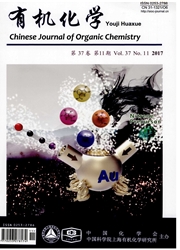

 中文摘要:
中文摘要:
在本体异质结太阳能电池的研究过程中,异质结活性层材料的发展一直是最基本最核心的部分,活性层材料包括给体材料和受体材料,其中给体材料的研究一直占据着主导地位,很多课题组报道的器件效率已经超过8%;而受体材料的研究却相对单一,大部分研究都围绕富勒烯及其衍生物.近年来非富勒烯类的有机小分子受体材料由于其易于合成与纯化、通过分子设计使能级更方便调节等优点引起了人们的广泛关注并且取得了很大进展,目前以它作为受体材料的电池效率可以达到4%.综述了近年来几类非富勒烯类有机小分子受体材料的研究进展,包括它们的分子设计及其在光伏器件中的应用,最后我们讨论了提高非富勒烯类的有机小分子受体材料器件性能的关键因素及其研究前景.
 英文摘要:
英文摘要:
To achieve high efficiency organic solar cells(OSCs), the development of donor and acceptor materials for the bulk-heterojunction(BHJ) blend is the most important part and has attracted great interest. So far, the study of donor materials is still dominant and devices with efficiency exceeded 8% are reported by many research groups. On the contrary, the developments of new acceptor materials are relatively limited, and most of them are focused on the derivatives of fullerene. Recently, organic small molecule acceptors(OSMAs), which are potential alternative to fullerene derivatives, have drawn significant interest. Compared to fullerene derivatives, OSMAs are much easier to be synthesized and purified, and the bandgap could be finely adjusted by proper molecule design. Recent reports on OSMAs show great improvement and the efficiency has reached 4%. In this review, several kinds of OSMAs, covering new molecule design and application in device fabrication are comprehensively introduced. Finally, critical challenges that determine photovoltaic performance and prospects for future directions are discussed.
 同期刊论文项目
同期刊论文项目
 同项目期刊论文
同项目期刊论文
 Synthesis and optoelectronic properties of novel fluorene-based copolymer for red light-emitting dio
Synthesis and optoelectronic properties of novel fluorene-based copolymer for red light-emitting dio Electroluminescence performances of 1,1-bis(4-(N,N-dimethylamino)phenyl)-2,3,4,5-tetraphenylsilole b
Electroluminescence performances of 1,1-bis(4-(N,N-dimethylamino)phenyl)-2,3,4,5-tetraphenylsilole b Synthesis and Characterization of Carbazole-Fluorene-Silole Copolymers as Efficient Green Light Emit
Synthesis and Characterization of Carbazole-Fluorene-Silole Copolymers as Efficient Green Light Emit 期刊信息
期刊信息
